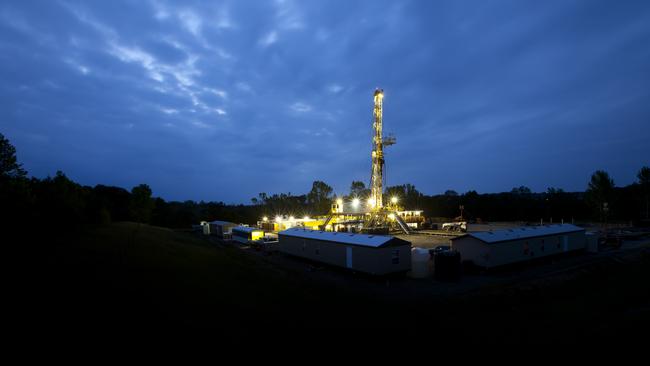BHP’s shale debacle helped management focus on capital allocation
BHP has finally drawn a line under one of the worst investments in its 133-year history.

Seven years after BHP plunged into the burgeoning US onshore shale oil and gas industry, and $US20 billion of lost cash later, the company has finally drawn a line under one of the worst investments in its 133-year history.
The best that can be said about the US shale venture, launched in the cash-flooded days of the China boom, is that it has provided some culture-changing lessons about capital discipline and that its exit has been stylishly executed and will leave management with more time to focus on boosting returns from the rest of the company’s assets.
Indeed, if it wasn’t for some canny Texas real estate purchases in the Permian basin by recent management, the sale price of $US10.8bn ($14.6bn) could have been lower by as much as $US4bn.
Yesterday, BHP said it had wrapped up an 11-month sale process for US onshore assets acquired in 2011 for $US20bn. The exit has been done the same way as the acquisitions under then petroleum boss Mike Yeager and chief executive Marius Kloppers — in two separate transactions.
The first asset BHP acquired, in a February 2011 deal, was the Fayetteville gas ground in Arkansas bought from Chesapeake Energy for $US4.8bn. It was agreed to be sold yesterday to the privately owned Merit Energy for just $US300m.
A second, $US15bn deal was struck in July 2011, for the company Petrohawk business. That business will go to oil giant BP for $US10.5bn. The sale price is understood to have been inflated by Permian basin land trading under Mr Yeager’s successor Tim Cutt that a year ago BHP insiders estimated had added $US3.6bn to the value of the Permian ground.
“The most valuable part of the (Petrohawk) package is BHP’s Eagle Ford position given its scale and attractive economics,” Wood Mackenzie analyst Maxim Petrov said. “But the Permian acreage offers the biggest longer-term upside, with some of the best break-evens in the play,”
The sale agreements followed three years of reduced drilling and productivity drives, designed to cut losses and salvage what value was left in prime shale assets that BHP for which paid way too much and then spent way too much developing.
The value loss over seven years is staggering. BHP bought the assets for $US20bn. It then spent another $US20bn developing them but made just $US10bn of operating cashflow, leaving it $US30bn out of pocket.
The proceeds from yesterday’s sale, which will almost all go back to shareholders as a special buyback or dividend, reduce the loss to about $US20bn.
The sale, while beating analyst expectations, will come with a $US2.9bn pre-tax writedown of goodwill that BHP still had on its books. That brings total US shale impairments, a series of which began in 2011-12, to $US16.3bn.
The decision to completely exit shale was announced to the market in August last year, two months after Ken MacKenzie was anointed to succeed Jac Nasser, who led the board at the time of the shale acquisitions.
When the sale process was announced, BHP was fighting a campaign by New York activist hedge fund Elliott that was pushing for changes, including the exit of US shale.
BHP claims it was heading toward a sale of the business even before Elliott came on the scene. In 2015, chief executive Andrew Mackenzie began saying shale would not take off globally, one of the reasons he said BHP had been keen to get into the business, and that it was not going to be as long-life as previously thought.
From about that time, BHP began cutting back spending and drilling and working harder on productivity.
Still, there was no previous talk of a complete exit, and there can be no doubt Elliott at least sharpened BHP’s focus and transparency by galvanising shareholder angst over the shale deal and a lack of company capital discipline.
And there is little argument that the Elliott campaign helped Ken MacKenzie, a BHP cleanskin, edge out more experienced campaigners Lindsay Maxsted and Malcolm Broomhead, who were on the board when the shale acquisitions were made.
Inside BHP, the shale debacle is seen as the leading driver of a management culture intently focused on capital allocation and the tug between returns to be gained from spending on growth versus returns to shareholders and debt repayment.
The shale assets themselves were good. But BHP paid too much and spent too much on development.
Luckily for BHP, the Petrohawk business also had a lot of shale oil and prices stayed above $US100 a barrel for a long time, buffering what should have been bigger losses for the big miner. But only until late 2014, when oil prices tanked and cash flow dried up.
